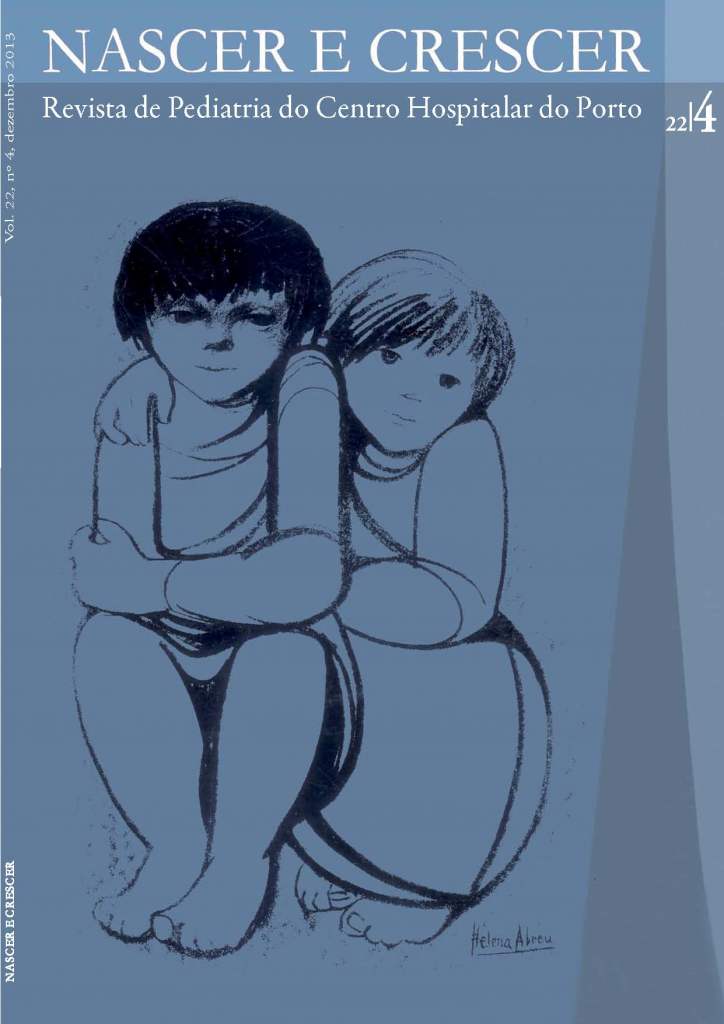ANTIBIOTIC PRESCRIPTION IN A PAEDIATRIC EMERGENCY DEPARTMENT FROM A LEVEL II HOSPITAL IN THE CENTRAL REGION
DOI:
https://doi.org/10.25753/BirthGrowthMJ.v22.i4.9753Keywords:
Antibiotics, emergency department service, pediatrics, prescriptionAbstract
Introduction: The discovery of penicillin, in the late 1920s, revolutionized science and brought medicine into the modern era. Since then, many other antibiotics appeared on the market. Nowadays, one of the biggest problems in medicine is the indiscriminated use of antibiotics, which has led to the emergence of resistant bacteria. In this context, an appropriate use of antibiotics is essential to the maintenance of their own effectiveness. There are very few studies on antibiotic prescription from Paediatric Emergency Services in Portugal.
Objective: Characterize oral antibiotics prescription in our Paediatric Emergency Service Unit.
Material and Methods: We performed a retrospective analysis of medical records from Alert ® computer database of children who attended the Paediatric Emergency Service Unit a randomly chosen day a month (a total of 30 days), from January 2008 to June 2010.
Results: During the study period, 4317 children (meaning 144 children/day) were observed in the Paediatric Emergency Service Unit. Oral antibiotics were prescribed to 400 children (9,3%). The amoxicillin was the most prescribed antibiotic and acute otitis media was the most common diagnosis.
Discussion: We concluded that there is a good balance in the prescription of oral antibiotics in our Paediatric Emergency Service Unit. Nonetheless, we propose some actions to improve oral antibiotic prescription.
Downloads
References
Bricks LF. Uso judicioso de medicamentos em crianças. J
Pediatr (Rio J) 2003; 79:S107 -S114.
American Academy of Pediatrics, Committee on Infectious
Diseases. Red Book: Report of the Committee on Infectious
Diseases. 29th ed. Elk Grove Village, IL: American Academy
of Pediatrics; 2012.
Rodrigues F, Calvino J, Januário L, Lemos L. Medicamentos
prescritos num Serviço de Urgência Pediátrica. Acta Pediatr
Port 2005; 36:273 -6.
Lemos L, Rodrigues F. Medicamentos prescritos no Serviço
de Urgência Pediátrico. Saúde Infantil 2003; 25: 57 -9.
Melo -Cristino J, Serrano N, Grupo Português de Bactérias
Patogénicas Respiratórias. Estudo Viriato: Actualização de
dados de susceptibilidade aos antimicrobianos de bactérias
responsáveis por infecções respiratórias adquiridas na co-
munidade em Portugal em 2001 e 2002. Rev Port Pneumol
; IX: 293 -310.
Lemos L, Rocha, G. A utilização de antibióticos num serviço
de urgência de pediatria. Saúde Infantil 1995; 17:5 -16.
Caldeira L, Remísio E, António A, Aguair P, Fonseca A, Fa-
ria Vaz A, et al. Prescrição de antibióticos para infecções do
tracto respiratório em Portugal Continental. Rev Port Clin Ge-
ral 2004; 20:417 -48.
Lemos L. A utilização de antibióticos em crianças e jovens no
ambulatório. É urgente prescrever menos e melhor. Mundo
Médico 2003; 28:64 -6.
Chiappini E, Principi N, Mansi N, Serra A, De Masi S, Ca-
maioni A, et al. Italian Panel on the Management of Pharyngi-
tis in Children. Management of acute pharyngitis in children:
summary of the Italian National Institute of Health guidelines.
Clin Ther 2012; 34:1442 -58.
Norma da Direção Geral de Saúde – Diagnóstico e tratamen-
to da amigdalite aguda em idade pediátrica, 26/12/2012
Downloads
Published
How to Cite
Issue
Section
License
Copyright and Authors' Rights
All articles published in Nascer e Crescer - Birth and Growth Medical Journal are Open Access and comply with the requirements of funding agencies or academic institutions. For use by third parties, Nascer e Crescer - Birth and Growth Medical Journal adheres to the terms of the Creative Commons License "Attribution - Non-Commercial Use (CC-BY-NC)".
It is the author's responsibility to obtain permission to reproduce figures, tables, etc. from other publications.
Authors must submit a Conflict of Interest statement and an Authorship Form with the submission of the article. An e-mail will be sent to the corresponding author confirming receipt of the manuscript.
Authors are permitted to make their articles available in repositories at their home institutions, provided that they always indicate where the articles were published and adhere to the terms of the Creative Commons license.


